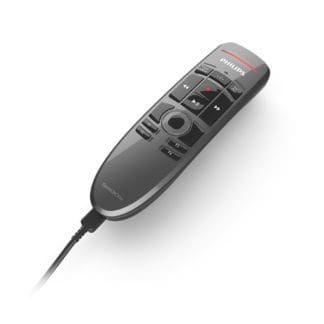By Kate Monica for EHR Intelligence
September 12, 2017-A new study by the University of Wisconsin and the American Medical Association (AMA) found primary care physicians spend almost six hours on EHR data entry during a typical 11.4 hour workday. Research by Arndt et al.published in the Annals of Family Medicine analyzed a retrospective cohort study of 142 family medicine physicians using a single Epic EHR system in southern Wisconsin. EHR interactions were captured from event logging records over a three-year period for direct patient care and activities not involving face-to-face interactions between patientsbservation that clinicians spent approximately 5.9 hours of an 11.4-hour workday on EHR data entry — 4.5 of these hours taking place during clinical hours and about 1.5 occurring during off-hours.The amount of time physicians spend at their monitors has created a concerning work-life imbalance that some healthcare industry leaders view as a public health crisis.In an effort to pinpoint precisely which tasks providers are spending their time on, researchers analyzed event logging records and assigned each event to one of 15 EHR task categories.
Causes of provider dissatisfaction by EHR
Clerical and administrative duties such as clinical documentation, order entry, billing and coding, and system security made up about half of the total EHR data entry time, while about a quarter of time spent using EHRs went toward inbox management.
Researchers reasoned handing off certain rote data entry tasks to other hospital staff could free up time for physicians and lower the risk of physician burnout.
“It is important to recognize that burnout and the increased workload clinicians have experienced from time spent working in the EHR are due to multiple factors, only one of which is the EHR system itself,” stated researchers.
Researchers cited other factors contributing to physician burnout as “inappropriate allocation of EHR tasks to clinicians” as well as “technology-supported guidelines that have placed hard stops in clinical workflows,” among others.
Shifting federal regulations and requirements also frustrate clinicians. While the factors contributing to physician burnout vary widely, reducing the amount of time clinicians spend at their monitors is one frequently suggested potential solution.
“EHR event logs can identify areas of EHR-related work that could be delegated, thus reducing workload, improving professional satisfaction, and decreasing burnout,” researchers maintained.
Providers spent an especially significant portion of their workday on documentation and computerized physician order entry (CPOE). AMA and University of Wisconsin researchers offered potential time-saving solutions for these tasks.
“Although EHR templates have improved documentation efficiency for some, the quality of the clinical note is often lower when compared with that obtained with dictation to transcription,” advised researchers. “Documentation support staff and additional training in documentation optimization should be readily available for interested clinicians.”
While researchers identified and offered support to physicians likely to benefit from transcription or voice-recognition software, very few physicians actually took advantage of these documentation support tools during a six-week observation period.
Researchers also suggested physicians should abandon the use of CPOE altogether.
“Minimal evidence for increased patient safety related to CPOE and reduced order efficiency of this system for physicians compared with other ordering systems implies that alternatives to CPOE should be considered,” they wrote.
Researchers suggested potentially allocating this task to other clinical staff using verbal or handwritten orders from physicians.
Furthermore, researchers doubted the benefits of virtual visits including telehealth, patient portals, and patient-physician consultations by video. “There is insufficient evidence that such asynchronous care improves health outcomes, cost, and overall health care use,” said researchers.
Researchers also advised against relying too heavily on EHR technology for communication between clinical teams. Verbal communication between care teams is still considered the most efficient option.
To gain further insight into which EHR-related tasks dominate the physician workday, researchers suggested other hospitals utilize the EHR task categories proposed in the study to enable comparisons between other organizations, physicians, and care teams.
“Best practice should be identified from high-performing individuals, teams, and organizations, and used as a goal for other organizations to pursue, but in relationship to clinician and team satisfaction,” they wrote. “Organizations could apply this EHR task-analysis framework to measure their effectiveness in supporting their clinicians and care teams in each of the EHR task categories.”
Improving EHR usability
AMA is leveraging this study to urge health IT developers to improve EHR usability and consider the importance of provider satisfaction.
“This study reveals what many primary care physicians already know – data entry tasks associated with EHR systems are significantly cutting into available time for physicians to engage with patients,” said AMA President David O. Barbe. “Unfortunately, clerical and administrative demands are not being reconciled with patient priorities and clinical workflow.”
- In an effort to guide better EHR system design, AMA outlined a framework of eight priorities to boost usability emphasizing the following objectives:
- Enhance physicians’ ability to provide high-quality patient care
- Support team-based care
- Promote care coordination
- Offer product modularity and configurability
- Reduce cognitive workload
- Promote data liquidity
- Facilitate digital and mobile patient engagement
Expedite user input into product design and post-implementation feedback
AMA also intends to work with health IT companies to encourage the development of more usable EHR technology and press policymakers to introduce health IT policy geared toward achieving this end.
“Poorly-designed and implemented EHRs have physicians suffering from a growing sense that they are neglecting their patients and working more outside of clinic hours as they try to keep up with an overload of type-and-click tasks,” said Barbe.
Furthermore, AMA has offered EHR end-users and experts a platform to discuss EHR usability and optimization through an online panel conversation. Panelists include AMA CMIO Michael Hodgkins, MD, Beth Israel Deaconess Medical Center CIO John Halamka, MD, and others.
These and other initiatives could quell concerns about physician burnout and provider dissatisfaction, allowing for EHR technology to become a boon instead of a burden to patient care delivery.


